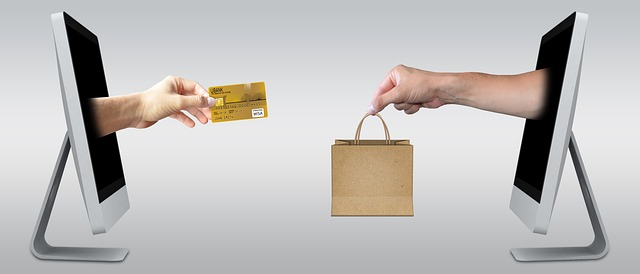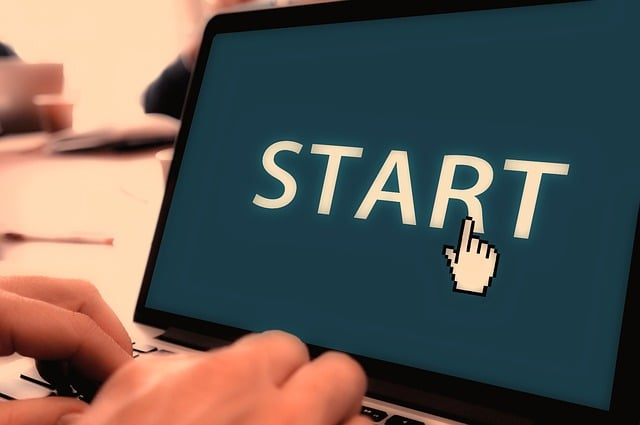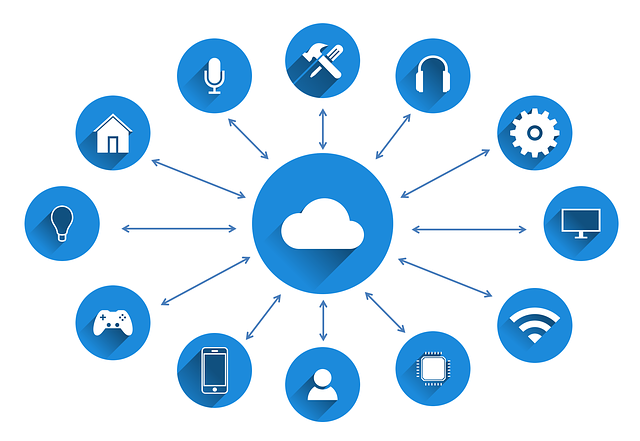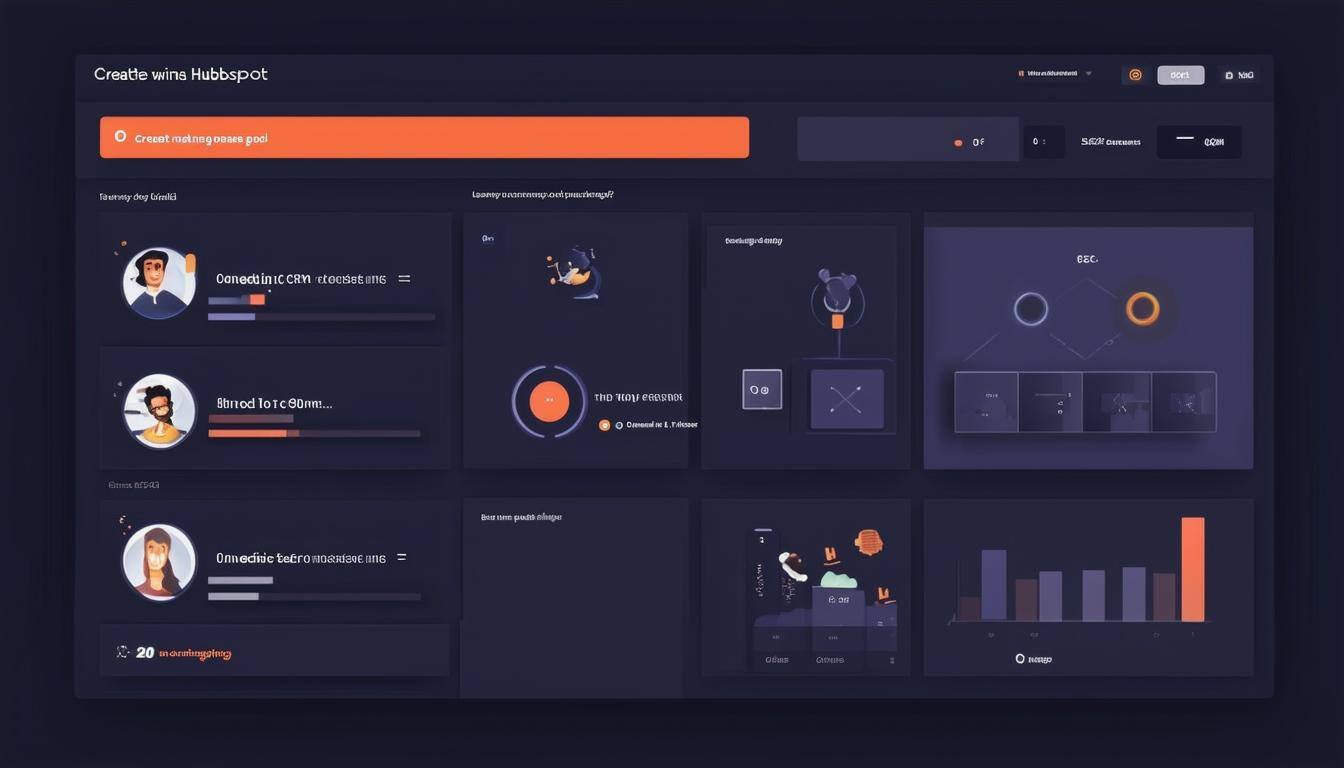How to use HubSpot marketing automation tools to increase sales
If you're a marketing manager looking to score big with your customers, you need to think of marketing and sales as a game of cricket. Just like a bowler needs to know the batsman's strengths and weaknesses, the marketing team needs to understand the needs and interests of their leads. And just like a good bowler will mix up their deliveries to keep the batsman guessing, the marketing team needs to use personalised and data-driven marketing to keep their customers engaged.

That's where Marketing Automation comes in. By automating repetitive tasks and enabling personalised and data-driven marketing, marketing automation can help save time and increase sales. And in this article, we're going to show you how to use HubSpot's marketing automation tools to become a marketing automation champion. So if you want to learn how to hit those marketing pitches out of the park, keep reading!
What is HubSpot marketing automation software?
How do you get started with HubSpot? It's actually quite simple. All you need to do is sign up for a HubSpot account and start setting up your marketing automation workflow. It's as easy as dragging and dropping different tools and tasks into a visual workflow builder.
Once you have your marketing automation workflow set up, you can start using HubSpot's many marketing automation tools. For example, you can use the email marketing tool to automatically send personalised emails to your leads and customers. You can also use the lead generation tool to capture leads from your website and nurture them through the sales funnel.

Using HubSpot's marketing automation tools
In addition to its marketing automation tools, HubSpot also offers sales automation tools. This is important because effective marketing and sales go hand in hand.
Think of it like a game of cricket. The marketing team is like the bowler, delivering pitches to potential customers (i.e. leads). The sales team is like the batsman, trying to hit those pitches for a sale (i.e. conversion).

Just like a good bowler needs to know the strengths and weaknesses of the batsman, the marketing team needs to understand the needs and interests of their leads. This is where marketing automation comes in. By using tools like lead generation and email marketing, the marketing team can gather information on their leads and deliver personalised pitches.
On the other hand, the sales team needs to be ready to hit those pitches. This is where sales automation tools come in. With tools like lead tracking and email integration, the sales team can easily follow up on leads and track their progress through the sales funnel.

Here's an example of how marketing and sales automation work together with HubSpot:
-
The marketing team uses the lead generation tool to capture leads from the website.
-
The lead's information is automatically added to the CRM (customer relationship management), and the lead is assigned to a sales rep.
-
The sales rep uses the email integration tool to send a personalised email to the lead.
-
The lead responds to the email, and the conversation is automatically logged in the CRM.
-
The sales rep follows up with the lead and sets up a call using the calendar integration tool.
-
The call goes well and the lead becomes a customer. The sales rep records the sale in the CRM, and the marketing team is notified.
As you can see, marketing and sales automation work together to help the marketing and sales team collaborate and convert leads into customers.
Tips for using HubSpot's marketing sales CRM effectively
![]()
Using any marketing automation software can be overwhelming at times, but the key to automation software is to stay focused on the five key areas:
-
Understand your leads: Just like a bowler needs to know the batsman's strengths and weaknesses, the marketing team needs to understand the needs and interests of their leads. Use HubSpot's lead tracking and segmentation tools to gather information on your leads and tailor your pitches accordingly.
-
Set goals and track progress: In cricket, a bowler needs to have a plan for how to get the batsman out. Similarly, the marketing team should set goals and track progress to see how their marketing automation efforts are performing. Use HubSpot's analytics and reporting tools to set goals and measure your results.
-
Use personalised pitches: In cricket, a good bowler will mix up their deliveries to keep the batsman guessing. The same is true in marketing. Use HubSpot's email marketing and social media tools to send personalised pitches to your leads and customers.
-
Collaborate with the sales team: In a game of cricket, the bowler and the batsman need to work together to score runs. The same is true for marketing and sales. Use HubSpot's CRM and email integration tools to collaborate with the sales team and keep track of leads.
-
Continuously improve: Just like a bowler needs to constantly practise and improve their skills, the marketing team should continually improve their marketing automation efforts. Use HubSpot's A/B testing and feedback tools to test different approaches and gather insights to improve your marketing automation workflows.
How do I get started with marketing automation?

To get started with marketing automation, you will need to choose a marketing automation platform and sign up for an account. We recommend HubSpot, but there are many other solutions. You can then start setting up your marketing automation workflow, which typically involves integrating different marketing tools and defining the tasks and triggers for automation. It's important to set goals and track your progress to see how your marketing automation efforts are performing. You may also want to consider consulting with a marketing automation expert to help you get started.
What are some common marketing automation tools?
Some common marketing automation tools include email marketing, lead generation, social media management, A/B testing, and analytics and reporting. These tools can help automate tasks such as sending personalised emails, capturing leads from your website, and tracking the performance of your marketing campaigns.
Can marketing automation increase sales?
Yes, marketing automation can increase sales by allowing marketers to focus on high-impact work, personalise their marketing efforts, and track and optimise their results. By using marketing automation tools to automate repetitive tasks, marketers can create and deliver targeted, relevant marketing messages that are more likely to convert leads into customers.
How does marketing automation integrate with a CRM?
Marketing automation typically integrates with a CRM platform, which helps track and manage customer interactions. This allows marketers to access customer journey data, such as their behaviour and interests, and use it to create personalised marketing campaigns. The CRM also helps sales reps manage their interactions with leads and customers, allowing for a more seamless collaboration between marketing and sales.
Can marketing automation help improve customer experiences?

Yes, marketing automation can help improve customer experiences by enabling personalised and data-driven marketing. By using marketing automation tools to track customer behaviour and interests, marketers can create and deliver tailored marketing messages that are more relevant and engaging to individual customers. This can help foster stronger relationships and improve customer satisfaction and loyalty.
How can I measure the success of my marketing automation efforts?
To measure the success of your marketing automation efforts, you can use analytics and reporting tools to track key metrics, such as conversion rates, customer engagement, and revenue generated. You can also set goals and benchmarks, such as a certain number of leads generated or a specific revenue target, and track your progress towards achieving those goals. By regularly reviewing your results and making adjustments to your marketing automation strategy, you can continually improve the effectiveness of your marketing efforts.
Can marketing automation be used for different types of businesses?
Yes, marketing automation can be used by businesses of all sizes and industries. Whether you're a small business owner, a marketing manager at a large company, or an entrepreneur, marketing automation can help you save time and increase sales by automating repetitive marketing tasks and delivering personalised marketing messages.
How much does marketing automation cost?

The cost of marketing automation can vary depending on the platform and features you choose. Some marketing automation platforms offer free plans for basic features, while others may have monthly subscription fees for more advanced features. It's important to carefully evaluate your needs and budget before choosing a marketing automation platform to ensure it fits your business requirements and financial constraints.
Can marketing automation be used for both B2B and B2C marketing?

Yes, marketing automation can be used for both B2B and B2C marketing. Whether you're targeting other businesses or individual consumers, marketing automation can help you automate repetitive tasks and personalise your marketing messages. By using Marketing Automation tools to track customer behaviour and interests, you can create a customer journey map and relevant marketing campaigns that are more likely to convert leads into customers.
Can marketing automation replace human marketers?
While Marketing Automation can automate many repetitive tasks, it cannot replace human marketers. Marketing automation is a tool that can help marketers save time and increase the effectiveness of their marketing efforts, but it still requires human input and creativity to create and execute successful marketing campaigns. Marketers need to have a good understanding of their audience and the market, as well as the ability to analyse data and make strategic decisions.
Conclusion
Just like a good bowler and batsman need to work together to score runs in cricket, marketing and sales need to collaborate to convert leads into customers. Marketing Automation can help facilitate this collaboration by automating repetitive tasks and enabling personalised and data-driven marketing. With the right marketing automation platform, such as HubSpot, you can set up and manage your marketing and sales workflows with ease.
But if you're feeling a bit stumped on how to get started with marketing automation, never fear! Our team of marketing automation experts is here to help. So if you want to learn more about how to use marketing automation to save time and increase sales, be sure to contact us. And remember, just like in cricket, with the right strategy and a little practice, you can be a marketing automation champion!
Need technical help with HubSpot CRM automation, learn more about our HubSpot CRM Operation Service here.



